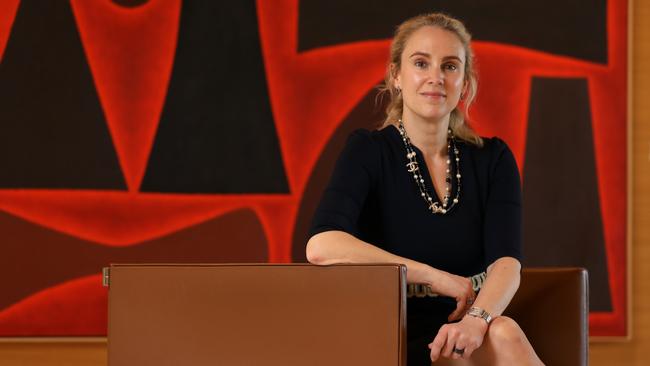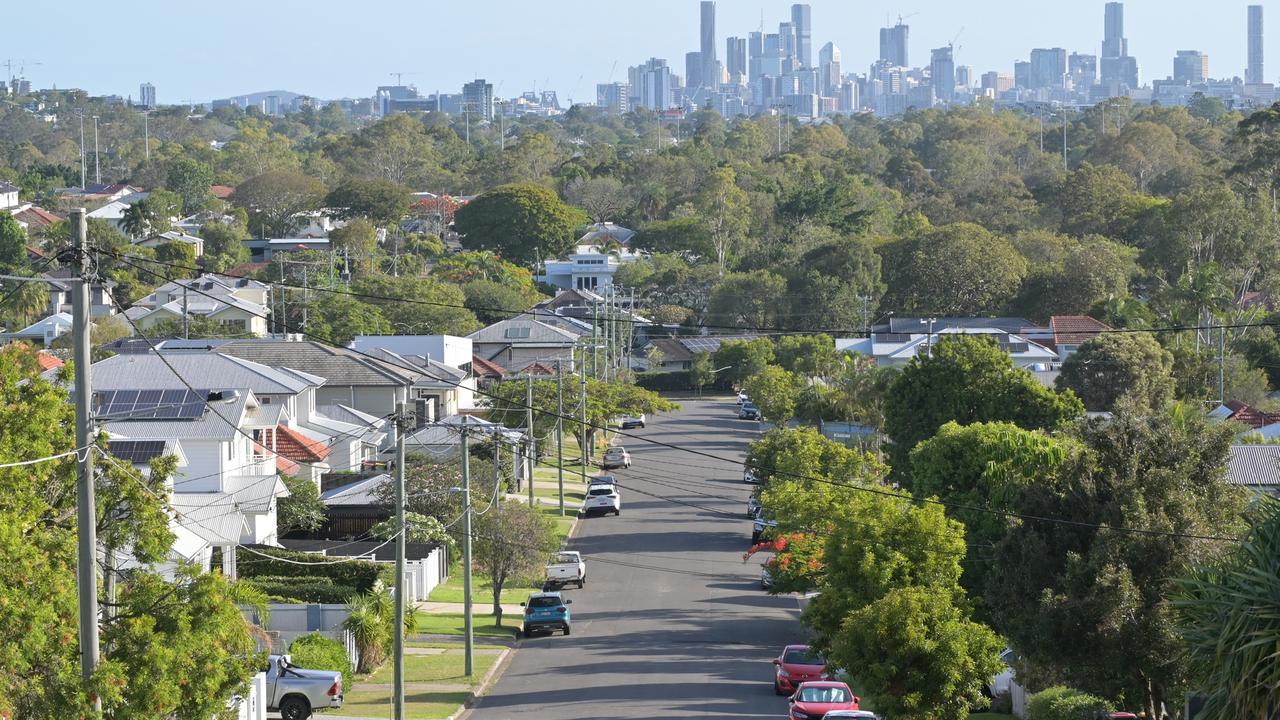US economy could still stall so don’t ignore the risks, says Citi
Citi banker Lucy Baldwin is one of the few market bears still standing. This is why she thinks there could be a hard landing.

Business
Don't miss out on the headlines from Business. Followed categories will be added to My News.
Lucy Baldwin is one of a handful of market bears still standing.
The London-based top markets analyst acknowledges it can get pretty testing going against the pack. That’s the price of her convictions.
Ms Baldwin, who heads up global markets research with Wall Street bank Citi, has seen her views pushed to the limit given the string of strong data coming out of the US in recent weeks.
However, she is holding the line. Multiple US rate cuts are coming from the second half of the year and the economy there is primed for a short, sharp recession.
In essence, the cumulative impact of sky-high cash rates in the US (currently as much as 5.5 per cent), will soon take its toll as stresses build in the system. And it will come quickly.
“Our view is that you do get a recession this year, which is now very much an out of consensus call,” Ms Baldwin tells The Australian.
She is wants 125 basis points of interest rate cuts in the US, suggesting an aggressive easing cycle is looming from the second half of this year.
She acknowledges her view very much sits in the shrinking universe of the bears. With the slow drip of strong data coming from the US, the bears have been losing the fight.
Much of the market is priced on the strong expectations of just two to three US rates cuts this year, and very few tip a US recession. The Wall Street benchmark, the S & P 500, is pushing record levels.

And even this consensus view on the path of US rate cuts is fast being reassessed, given signs of continued strength – including figures released Friday showing much faster growth than expected in the jobs market.
Ms Baldwin acknowledges her position is constantly being challenged on this year’s run of strong data.
“We’re still sticking with it. We think, on balance, the risks are underappreciated,” she says.
“Clearly, early last year everybody was convinced there’s going to be a recession, and there wasn’t and the data was much stronger. But there’s no doubt there’s more stresses building.”
Behind the top-line numbers, there’s US credit card data pointing to higher usage across different pockets of consumers, suggesting savings buffers have been drawn down. Job resignation rates are falling, pointing to rising job insecurity, and even with strength in jobs there are more people entering the workforce and this is helping to keep a lid on wages.
“We think the US will cool, soften and then slow. We think it will tip into a recession,” she says but qualifies that her view is “finely balanced”.
“It’s only a short, mild recession. But nonetheless a recession,” Ms Baldwin says.
She and her team of global strategists predict the 125 basis points in rate cuts will start from June, and there are three reasons for this.
The cumulative squeeze on financial conditions from higher interest rates are starting to bite, particularly as consumers and corporates roll over their ultra cheap pre-pandemic debt.
Secondly, there are signs the ongoing stubborn services inflation that had the US Federal Reserve officials so worried, is starting to soften, albeit from an inflated level. The tapering off of stimulus programs are helping to cool this form of inflation, while goods inflation is already softening (Although there is a risk this year’s US election will ramp up of spending next year).

Finally, the bigger pressures are the sheer volume of US debt in the system – which is going up $1 trillion every 100 days. The US Federal Reserve has been quietly shrinking its $US7 trillion-plus balance sheet in a process known as quantitative tightening that has been keeping short-term interest rates elevated. This process is likely to end later this year.
“I think the sort of broad set of camps is hard landing versus soft landing, and team soft landing thinks it’s a two to three cuts this year and are probably different from us in the sense that we think that with the slowdown essentially you’re going to get this loosening of the labour market. For us, it’s a fairly traditional view of demand goes down for people and jobs,” Ms Baldwin says.
Europe too is under pressure; the region faces a number of headwinds, including slowing growth.
Ms Baldwin and her team have 100 basis points of cuts from the European Central Bank pencilled in for the second half of the year. The ECB’s rate-setting body meets this week.
Despite a downbeat view over the US economy, Ms Baldwin’s outlook for shares is modestly brighter – although still short of a bullish view. Her base case is for shares to hold steady, the S & P 500 ending the calendar year at 5100 points (it closed short of a record at 5204 points on Friday).
The optimistic case is ending the year at 5700 points, although much still needs to go right.
“If you look at valuation in the US market, it’s hard to say if there’s going to be a material rerating because 90 per cent of history, the market has been cheaper,” she says.

But this in itself isn’t a reason to sell shares. Ms Baldwin points out that it’s time in the market that counts rather than trying to pick the best time to get into the market.
With the strong gains in the past six months, she dismisses suggestions of a bubble forming on Wall Street, given much of the gains dominated by the Magnificent Seven tech companies that have got away from the rest of the market.
As a top-down analyst Ms Baldwin has been giving Citi’s clients in Australia a global perspective on how the AI race is playing out on the markets. This includes picking the next wave of winners.
AI investing is forming around three broad groups. There are the genuine AI natives – names like Microsoft, Nvidia and Meta that have already staked out a leadership in the area.
The second wave represents the biggest opportunities for investors right now. These are the companies clustered in banking and insurance, healthcare and intellectual services, including adjacent technology where AI offers a transformational shift in not only productivity but the way their business operates.
It is still evolving and the market is yet to deliver them an AI premium, but these are the ones set to make the highest marginal returns from investment in the technology.
Finally, there will be a cohort of companies already way behind in the digital adoption; the labour-intensive service companies or those heavily industrialised and face limited upside from the AI revolution.
Meanwhile, Ms Baldwin says geopolitics is reshaping markets like never before.
The new ground zero is the battle for dominance in microchips where superpowers are scrambling for dominance. This is a great case study about how we are grappling with a new commodity which has become concentrated across just a few countries.
This is now becoming the big force between China and the US with the backing of players like Taiwan and Japan.
China’s rapid rise from nowhere to become the world’s biggest electric vehicle maker shows what the Asian giant is capable of when it wants to dominate an industry.
Even if the US does get the advantage in the AI race “China is still there – investing, reinvesting in building capability”.
Originally published as US economy could still stall so don’t ignore the risks, says Citi



